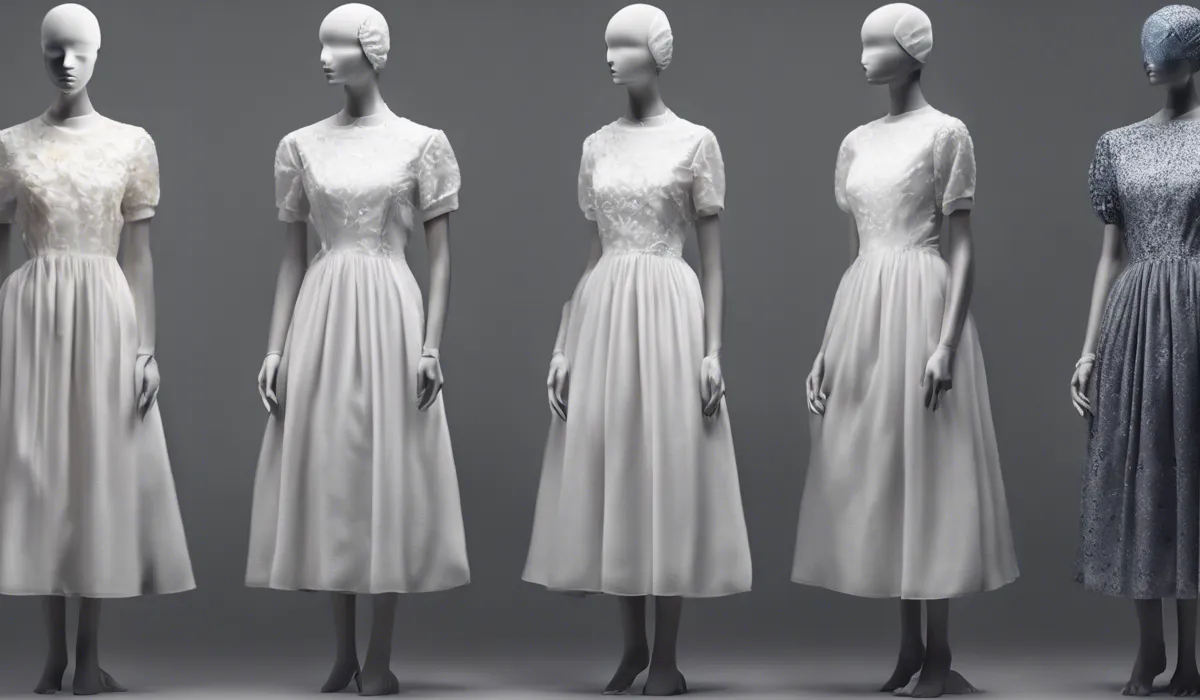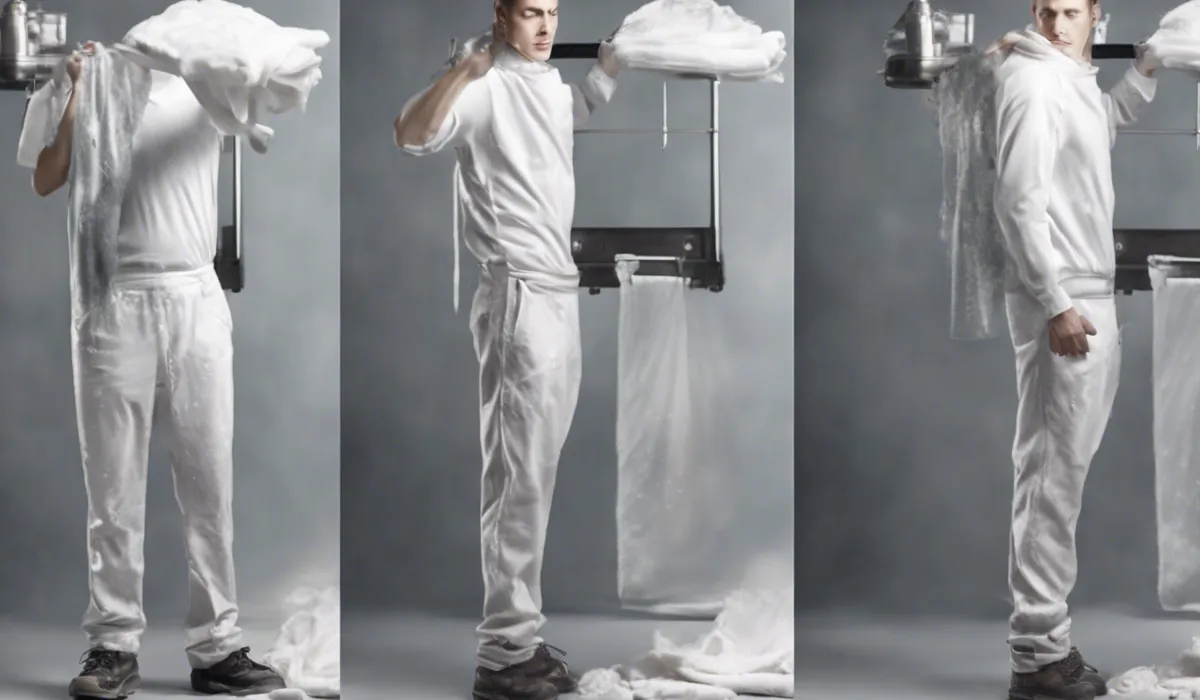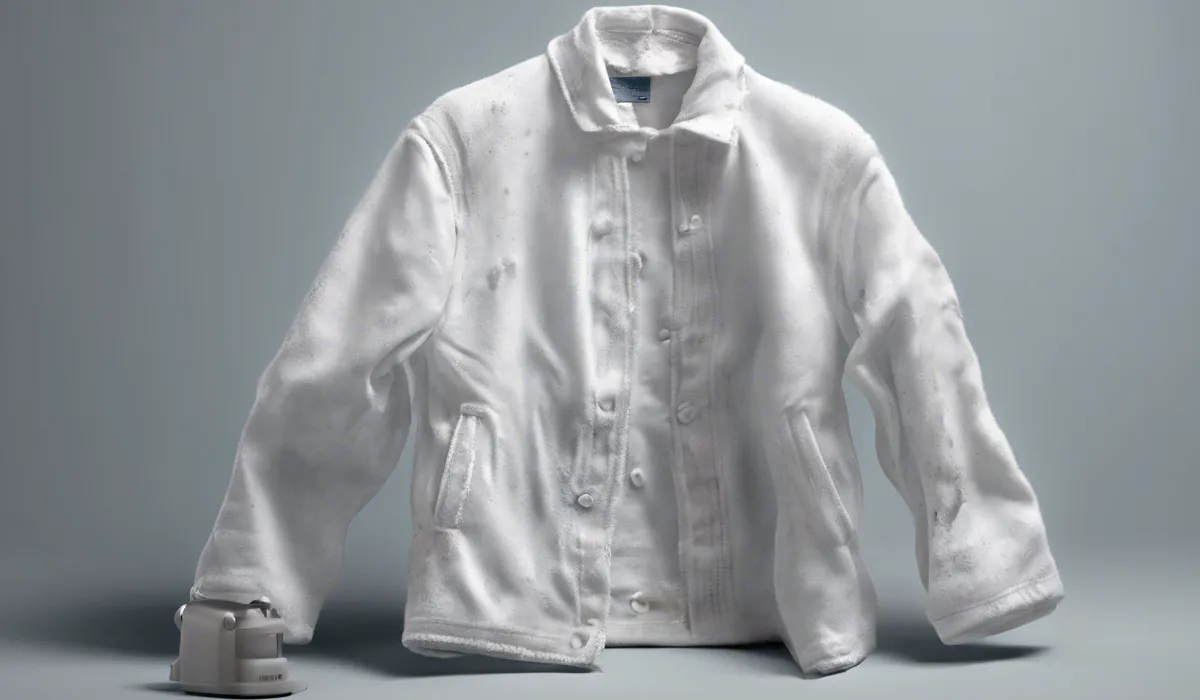To clean clothes exposed to mold spores, brush off loose mold outdoors. Wash them using hot water with detergent and 1 cup of vinegar. Dry thoroughly in the sun or a hot dryer to kill any remaining spores.
Understanding Mold and Its Effects on Clothing

What is Mold?
Mold is a type of fungus that grows in filaments called hyphae. It thrives in warm, damp, and humid conditions, often appearing as a stain or smudge on different materials, including clothes.
Mold plays a crucial role in nature by breaking down dead organic matter, but it can cause problems when it grows where it is not wanted, such as on our clothing.
Conditions for Mold Growth on Clothes
Mold spores are always in the air around us, but they need the right conditions to grow on clothes.
These conditions include moisture, warmth, darkness, and organic material. Leaving wet clothes in a pile, storing them damp, or having a closet with poor ventilation can create an ideal environment for mold to grow.
Common Types of Mold on Clothing
There are several types of mold that can grow on clothing. Aspergillus, Penicillium, and Cladosporium are among the most common.
Each type has its preferred conditions and can cause different types of staining and damage to fabrics.
Health Risks of Mold Exposure
Mold exposure can lead to health issues, especially for those with allergies, respiratory conditions, or compromised immune systems.
Symptoms can range from sneezing and coughing to more severe reactions like asthma attacks or allergic responses. This makes it essential to remove mold from clothing promptly and safely.
Handling Moldy Clothes Properly
It is important to handle moldy clothes with care to prevent the spread of spores and protect your health.
Understanding how to clean and disinfect clothes properly can help you salvage your garments and avoid the costs of replacement.
Pre-Treatment and Safety Measures

Personal Protective Gear for Mold Cleaning
Before tackling moldy clothes, wear protective gear to keep yourself safe. This includes wearing gloves, a mask or respirator, and goggles to prevent mold spores from coming into contact with your skin, eyes, and respiratory system.
Preparing the Work Area
Choose an outdoor space or a well-ventilated area to clean moldy clothes. It helps to lay down plastic sheets to catch any loose spores and prevent them from spreading in your home.
Sorting and Assessing Mold Damage
Sort through your clothes and separate moldy items from the rest. Look for signs of extensive damage where the mold may have compromised the fabric’s integrity.
Some items may be beyond saving and should be discarded appropriately.
Pre-Treatment Steps
Before washing, loosen mold spores by brushing the clothes outdoors. This helps to remove excess mold and prevent it from spreading during the wash cycle.
Natural and Chemical Pre-Treating Solutions
There are both natural and chemical solutions for treating mold on clothes. White vinegar is a natural option that can kill mold, while commercial mold removers offer a chemical-based solution.
Always test a small, inconspicuous area of the fabric first to ensure that the treatment does not damage the garment.
Cleaning and Disinfecting Mold-Exposed Clothes

Step-by-Step Guide to Washing Moldy Clothes
To wash moldy clothes, start by setting your washing machine to the hottest water setting that’s safe for the fabric.
Add your regular detergent along with a cup of vinegar to disinfect the clothes. Run a complete wash cycle and consider repeating if necessary to ensure all mold is removed.
Washing Machine Settings and Detergents
Use a high-temperature cycle and a detergent that contains bleach or another disinfecting agent, if suitable for your fabric. The heat and the detergent work together to kill mold spores and sanitize the clothing.
Home Remedies for Mold Removal
Besides vinegar, baking soda can also be used to remove mold. Add a half-cup of baking soda along with your detergent to the wash cycle.
Baking soda is a natural deodorizer and cleaner, which can help remove stubborn mold stains and smells.
Professional Mold Removal Services
If the mold infestation is severe or the clothing is delicate and requires special care, consider using professional mold removal services.
These experts have the knowledge and equipment to safely restore mold-damaged clothing.
Drying and Storing Clothes to Prevent Mold
After washing, dry clothes thoroughly in the sun or in a hot dryer to kill any remaining spores.
Store clothes in a dry, well-ventilated area to prevent mold recurrence. Use dehumidifiers or moisture absorbers in closets to keep humidity levels low.
Final Thoughts
For clothes contaminated with mold spores, start by brushing them outside. Launder with hot water, adding detergent and a cup of vinegar to the cycle.
Ensure items are completely dried by using direct sunlight or a hot dryer, which helps to eliminate any lingering spores and prevent mold growth.
